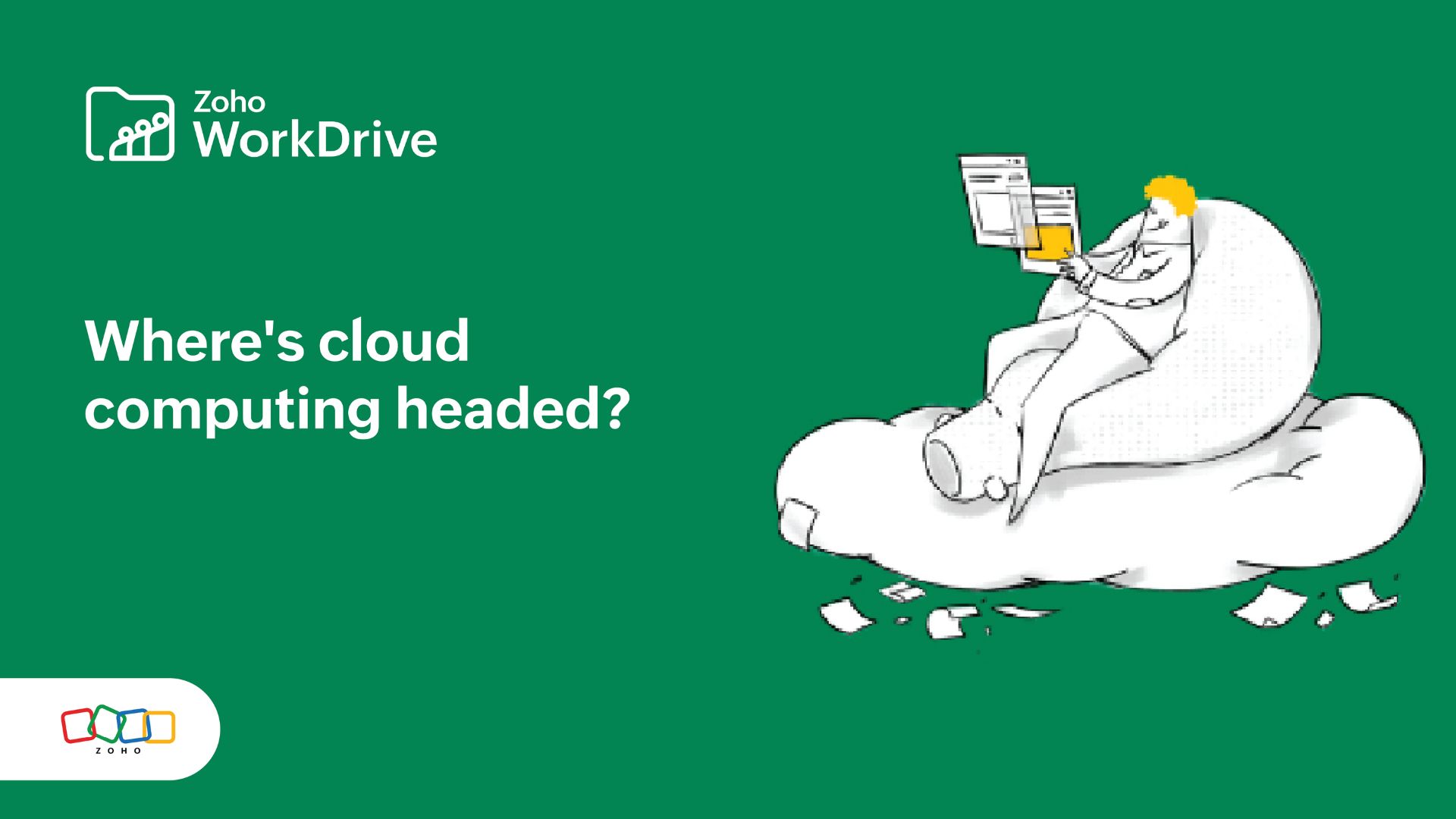5 trends transforming cloud computing
- Last Updated : December 29, 2023
- 623 Views
- 3 Min Read

What was dismissed as a technology fad just a few years ago, is now widely accepted by most major enterprises around the world. Cloud computing, technically the warehouse of digital data, is transforming the IT landscape and how companies work it.
According to the International Data Corporation (IDC), cloud spending is expected to grow at more than six times the rate of IT spending through 2020.
Back in 2017, a significant chunk of cloud investments went in the direction of SaaS and cloud security. However, the time has changed as many enterprises have started to consider cloud computing more than just a storage and backup service provider.
At Zoho, we’re talking about many of the changes revolutionizing both cloud computing and its role in the business world, including the following five trends.
Increased importance of hybrid clouds
According to IBM CEO Ginny Rometty, “Hybrid cloud is an emerging one trillion dollar market.”
For business organizations of varying sizes, the “one cloud fits all” approach cannot be the right answer to all their needs. A hybrid multi-cloud environment, one that blends on-premise infrastructure with private and public cloud architecture, will better enable businesses to increase their efficiency.
According to Flexera’s 2019 State of the Cloud Survey, “84 percent of respondents have a multi-cloud strategy,” and the number of enterprises with a hybrid cloud strategy grew from 51 percent in 2018 to 58 percent in 2019.
Serverless cloud computing on the rise
Serverless cloud computing allows developers to build and run applications in a server-less platform, without worrying about the back-end infrastructure.
For example, using a full-stack serverless developer platform like Zoho Catalyst can help you build custom solutions on a serverless, event-driven compute platform. A serverless platform like Catalyst requires less time and effort and improves efficiency by allowing developers to connect and extend cloud services to work on their applications and microservices.
Change in company culture
Thanks to cloud computing, many businesses are experiencing a major shake-up in their internal work culture by allowing employees to adapt to innovation and creativity. Working in the cloud creates an atmosphere of collaboration and teamwork in company culture.
There is a misconception that many people will start losing their jobs because of cloud computing. Contrary to this popular myth, many companies will end up needing more people with new skill sets to work on cloud platforms.
Cloud-related job titles—such as cloud architect, cloud project manager, cloud service broker and cloud automation engineer—will become increasingly common as businesses of all kinds continue to adopt cloud computing.
Emergence of Artificial Intelligence
Artificial Intelligence-powered technologies are expected to triple by 2021, according to Spiceworks’ State of IT 2020 report.
Most types of hardware, that companies use lack computing power to execute AI-powered applications. This is where cloud computing comes in.
Experts believe infusing cloud computing with artificial intelligence could revolutionize the way organizations work. AI-as-a-service improves existing cloud computing solutions and can build new paths for development.
IT solutions like the Internet of Things (IoT), chatbots, recommendation engines, and big data analytics can be greatly enhanced by infusing AI with cloud computing.
Online productivity tools over traditional software
Another striking stat the Spiceworks State of IT report reveals is “cloud budget allocations for online productivity tools are increasing from 10% in 2019 to 14% in 2020, while budgets for on-premises productivity software will remain flat.”
On top of that, among all cloud products and services, online productivity tools topmost enterprises’ cloud budget allocation for the next few years. Many businesses are primarily moving to online productivity tools to allow their teams to work remotely, with subsequent reasons being built-in data analytics and more secure disaster recovery.
Using online file management and collaboration platform, such as Zoho’s WorkDrive, not only helps teams collaborate remotely and on the go but also includes a built-in suite of office and productivity products and state-of-the-art data security and recovery.
Moving forward with cloud
To lead in a cloud computing environment, businesses should be ready to utilize a hybrid, multi-cloud strategy, open for improvements, and aware of their security. They must be able to leverage these new innovations at the right time to stay ahead of the competition.
Choosing the right option for your business needs calls for careful analysis before making this vital decision, but the growing availability of cloud-based technology on today’s market will make it easier for businesses of any size and type to find the best cloud computing solution for their needs.


